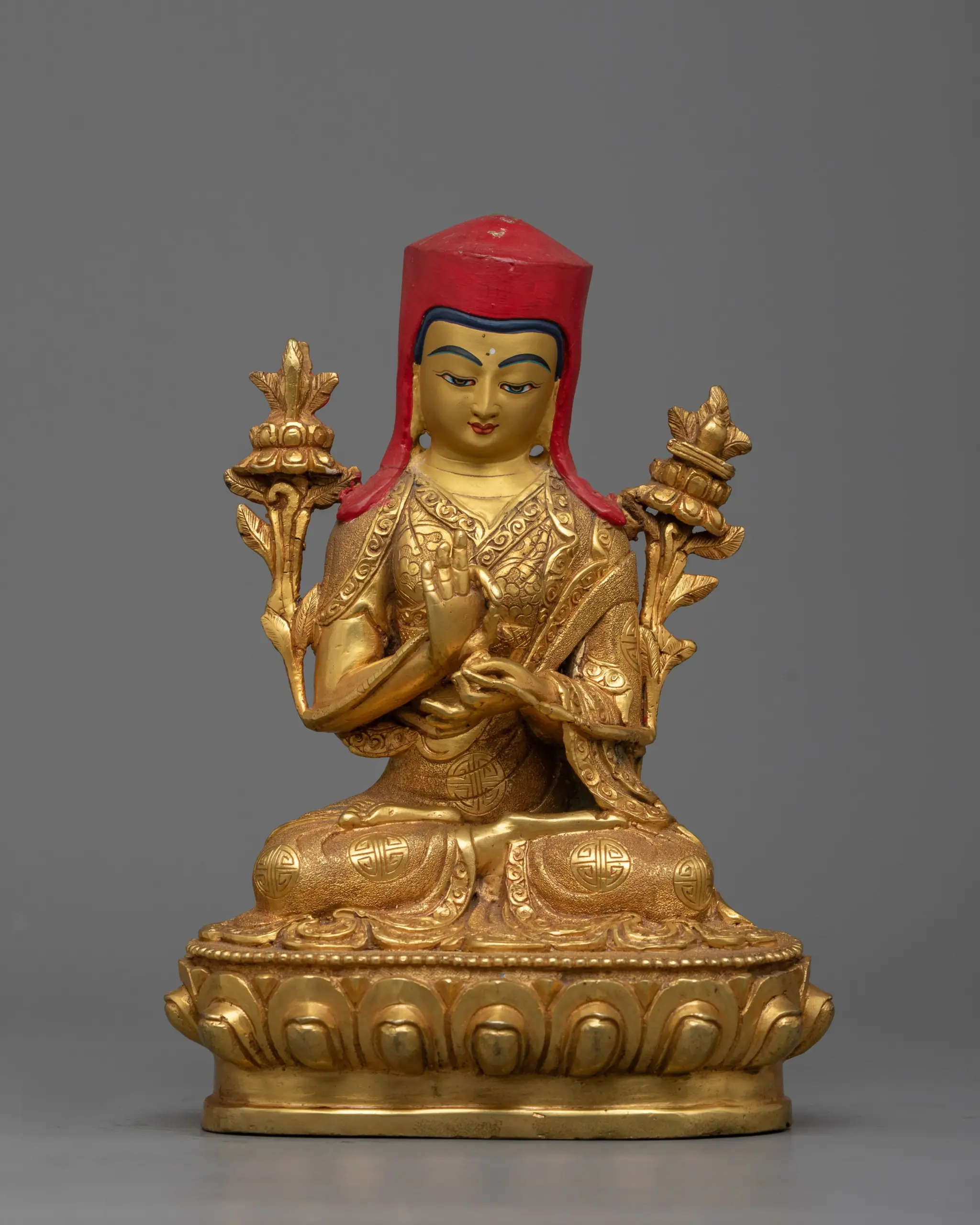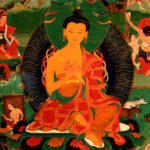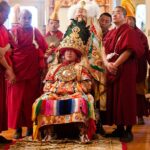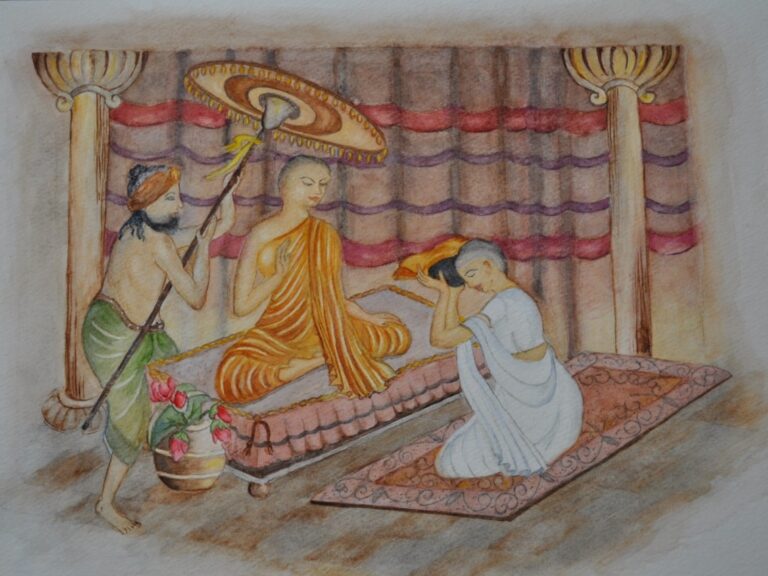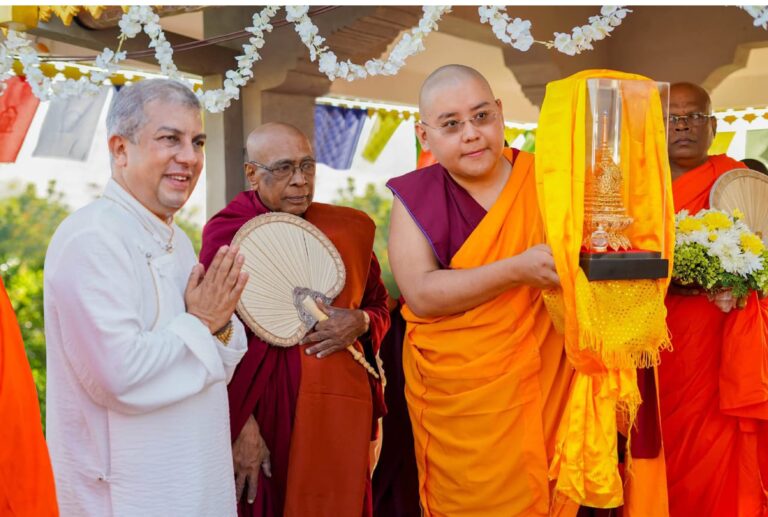Sakya Pandita Kunga Gyaltsen: Scholar, Saint, and Statesman of Tibetan Buddhism Sakya Pandita Kunga Gyaltsen (1182–1251), commonly known as Sakya Pandita or Sa-pen, stands as one of the most influential figures in the history of Tibetan Buddhism. A master of philosophy, linguistics, and Buddhist doctrine, he was also a statesman whose influence reached beyond Tibet …
Sakya Pandita Kunga Gyaltsen: Scholar, Saint, and Statesman of Tibetan Buddhism
Sakya Pandita Kunga Gyaltsen (1182–1251), commonly known as Sakya Pandita or Sa-pen, stands as one of the most influential figures in the history of Tibetan Buddhism. A master of philosophy, linguistics, and Buddhist doctrine, he was also a statesman whose influence reached beyond Tibet to the court of the Mongol Empire. As a central figure in the Sakya school of Tibetan Buddhism, his legacy endures through his writings, his role in transmitting Buddhist thought, and his pivotal role in political-religious diplomacy.
Early Life and Education
Born in 1182 into the Khön family in Sakya, Tibet, Sakya Pandita showed signs of exceptional intelligence from a young age. He was part of a noble lineage deeply connected to Buddhist scholarship. It is said that he began studying Sanskrit early and could give discourses on complex tantric texts by the age of eight. His early education was guided by his maternal uncle, the great teacher Jetsun Dragpa Gyaltsen, from whom he learned sutras, tantras, logic, and poetics.
In 1208, at the age of 26, he received full monastic ordination from the Indian master Śākyaśrībhadra, a highly revered Kashmiri scholar then residing in Tibet. This event solidified Sakya Pandita’s place within the ordained Sangha and marked the beginning of his emergence as a spiritual authority in Tibetan Buddhism.
Scholarly Contributions
Sakya Pandita was a prolific and versatile scholar whose writings laid the foundations for many aspects of Tibetan scholasticism. Fluent in Sanskrit and skilled in classical Indian logic and grammar, he helped preserve and transmit Indian Buddhist intellectual traditions into Tibet.
His most influential works include:
- “Treasury of Epistemology” (Tshad ma rigs gter) – A major treatise on Buddhist logic and valid cognition.
- “Clear Differentiation of the Three Vows” (sDom gsum rab dbye) – An essential text analyzing the distinctions between the vows of individual liberation, bodhisattvas, and tantric practitioners.
- “Clarifying the Sage’s Intentions” – A commentary on the Perfection of Wisdom teachings.
- “A Treasury of Aphoristic Jewels” – A work offering pithy and ethical insights on daily life and spiritual practice.
- “The Entrance Gate for the Wise” – A guidebook for students entering Buddhist studies.
These works have remained central to Tibetan monastic education and continue to be studied and debated across Buddhist institutions today.
Religious and Political Influence
In addition to his academic and religious achievements, Sakya Pandita played a critical role in Tibetan political history during the 13th century. Around 1244, he was invited by Godan Khan, a Mongol prince and grandson of Genghis Khan, to his court in Liangzhou (modern-day Gansu province, China).
Sakya Pandita accepted the invitation and used the opportunity not only to defend the value of Buddhist teachings but also to introduce the Mongol elite to Buddhist philosophy and ethical codes. His influence helped foster a peaceful relationship between Tibet and the rising Mongol Empire and set the stage for later political integration of Tibet under Mongol rule.
According to tradition, he performed a miracle at the court—transforming an illusion into a real temple—which helped convince the Mongol court of Buddhism’s power. His efforts contributed to the formal patron-priest relationship between Tibet and Mongolia, which shaped the region’s history for centuries.
In Tibetan tradition, there are ten classical sciences, divided into five major and five minor fields of study. These disciplines form the foundation of traditional Tibetan education and scholarship. The categorization is traditionally attributed to the scholar Se-pen, who first formalized this system.
The Ten Traditional Sciences of Tibet
Five Major Sciences:
- Arts – Including crafts, painting, and other forms of creative expression.
- Medicine and Astrology – Covering the Tibetan medical system and astrological practices.
- Epistemology – The study of knowledge, logic, and reasoning.
- Linguistics and Grammar – The analysis of language structure and usage.
- Buddhist Philosophy – In-depth study of the teachings and philosophical frameworks of Buddhism.
Five Minor Sciences:
- Poetry – The art of composing verse with aesthetic and emotional depth.
- Synonymy – The study of synonymous words and their nuanced meanings.
- Rhetoric – The art of persuasive speaking and writing.
- Drama and Performance (Opera) – Traditional Tibetan performing arts.
- Astrology – (Also appearing in the major sciences) – Emphasizing its practical and spiritual significance.
Although Tibetan Buddhist epistemology existed prior to Sakya Pandita (Sa-pen), it had not yet been systematically organized for formal study within monastic institutions. Sakya Pandita was the one who established it as a structured discipline, integrating it into the curriculum of monastic education.
Earlier Tibetan translators primarily focused on translating Indian scriptures from Sanskrit into Tibetan. However, Sakya Pandita was the first Tibetan scholar who not only translated Indian texts into Tibetan but also translated his own work—The Treasury of Epistemology—into Sanskrit.
Sakya Pandita is credited with creating the original script for the Mongolian language. Although the modern Mongolian script has undergone some modifications over time, its foundation remains largely based on the script he developed.
Legacy and Death
Sakya Pandita passed away in 1251 at the age of 70 in Liangzhou. He appointed his nephew, Chögyal Phagpa, as his successor, who would later become the imperial preceptor to Kublai Khan. This succession helped ensure that the Sakya school retained its central influence in both the spiritual and political arenas of Tibetan society.
After his death, many miraculous relics were said to have emerged from his cremation site, and he was widely venerated as a realized master and enlightened being. His teachings continue to inspire not only the Sakya tradition but also the broader world of Tibetan Buddhism.
Conclusion
Sakya Pandita Kunga Gyaltsen was more than a scholar; he was a visionary who combined deep spiritual knowledge with worldly wisdom. Through his writings, teachings, and diplomatic efforts, he shaped the spiritual, cultural, and political fabric of Tibet and extended the reach of Buddhism into the Mongol Empire. His legacy remains vibrant, not only in monastic study halls but in the ongoing dialogue between faith, philosophy, and governance.
References
- Sakya Tradition Official Site – “Biography of Sakya Paṇḍita Kunga Gyaltsen”
https://sakyatradition.org/biographies/sakya-paṇḍita-kunga-gyaltsen - Rywiki – Rangjung Yeshe Tibetan Wiki – “Sakya Pandita Kunga Gyaltsen”
https://rywiki.tsadra.org/index.php/Sakya_Pandita_Kunga_Gyeltsen - Jackson, David P. A Saint in Seattle: The Life of the Tibetan Mystic Dezhung Rinpoche. Wisdom Publications, 2003.
- Snellgrove, David. Indo-Tibetan Buddhism: Indian Buddhists and Their Tibetan Successors. Shambhala Publications, 1987.
- Christie’s Auction House – “A Painting of Sakya Pandita Kunga Gyaltsen”
https://www.christies.com/lot/lot-a-painting-of-sakya-pandita-kunga-tibet-5716000/
Get in Touch with Us
We’d love to hear from you—share your thoughts or ask a question!

